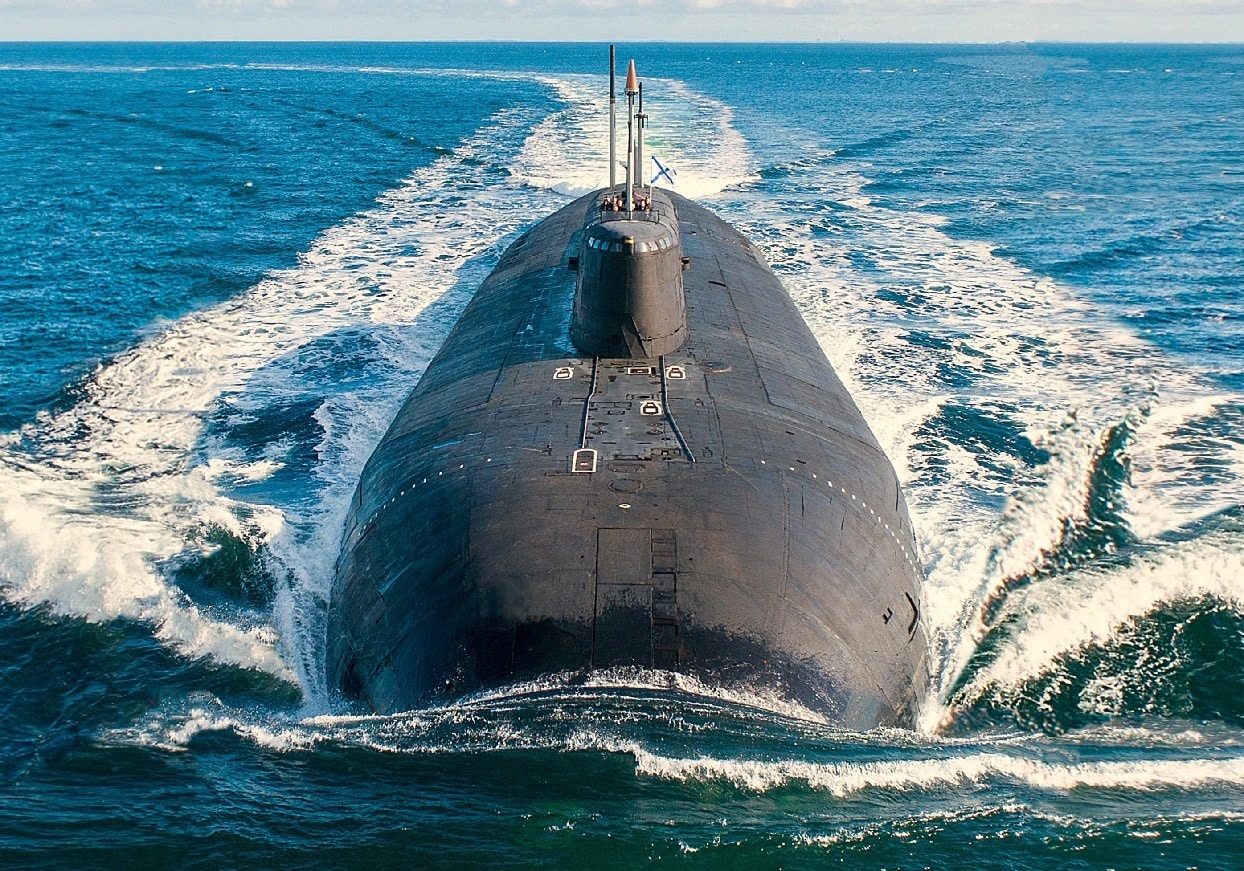Russia’s Oscar II-class submarine was built to kill U.S. Navy aircraft carriers and U.S. aircraft carrier groups. However, father time is undefeated when it comes to making sure any once-prominent naval platform becomes obsolete: While Russian military leadership seeks to develop its nuclear-powered Project 949A Antey submarine cruise missiles into a platform of the future, it may prove impossible to fully wash away the class’s troubled past. While Russia’s newly heavily modified Belgorod submarine is an example of the submarine class which Russia seeks to project as a mainstay of its submarine force of the future, the calamitous sinking with all hands of the Kursk will remain a difficult stain to wash off from the history of the Project 949A.
More commonly known in the West by its NATO designation Oscar-II, the Project 949A Antey-class was designed to challenge U.S. and NATO carrier groups in the event of a trans-continental war between the Soviet Union and the United States. Production on the Russian Oscar-II proceeded between 1985 and 1999, with eleven of the newer Oscars replacing the smaller Oscar-Is, of which only two were produced.
Oscar II – Technical Details
These Oscar-IIs have a displacement of 24,000 tons and a length of 155 meters and are built with a double-hull construction intended to improve survivability if the submarine is struck in a torpedo attack.
The class is also equipped with 24 P-700 Granit cruise missiles as well as six torpedo tubes which can launch torpedoes and other anti-ship cruise missiles as well.
While part of the reason the Oscar-II is larger than its Oscar-I predecessor is to provide more room in the upgraded Oscar for a quieter engine, it appears that the Oscar engine is prone to having technical difficulties.
Oscar II Problem
The Oscar most recently made news in Europe after an example of the class, the Orel, broke down while transiting the Baltic Sea near the Danish city of Århus, forcing a Russian tugboat to actively assist the submarine, which lay helpless in the water after its propulsion system gave out.
Of course, this incident, which ended without loss of life or materiel, is not the worst in the service life of the Oscar-II class. That dubious distinction is taken by the sinking of the Russian submarine Kursk, which sank with all hands in 2000. While taking part in a Northern Fleet exercise in the Barents Sea, a massive explosion caused by the detonation of a torpedo onboard the Kursk sent the submarine to the bottom of the sea. While several members of the submarine’s crew appeared to have survived the initial detonation, the decision by the leaders of the Russian Northern Fleet and Russia’s political leadership to refuse outside assistance ultimately doomed the sailors on board to die on the vessel. The Kursk was one of the newest Oscar-IIs at the time of the sinking (having been commissioned in 1994), which cast some doubt on Russia’s upkeep of its Oscar-IIs and its wider submarine fleet.
What Happens Now?
Today, the Oscar-II class submarine Belgorod is a prominent project of Russia’s naval leadership to modernize the country’s submarine fleet. The Belgorod is effectively a highly modernized version of the Oscar-II which is designed to form a new element of Russia’s nuclear triad, and to act as a mothership for smaller submarines and equipment designed for espionage or sabotage of infrastructure at the bottom of the ocean, as well as other deep-sea covert activities. However, the Belgorod’s most unknown mission is to serve as a platform for Russia’s Poseidon nuclear torpedo, which itself likely remains in development, and is not expected to be deployed until 2027. The Poseidon is both nuclear-powered and nuclear-capable, a technological combination that has no analog elsewhere.
While Russia’s military leadership seems to view their Oscar-IIs as versatile platforms that will be handy for future modernization and use in Russia’s nuclear triad, there is no way of knowing if many of the technical issues which have plagued the class in the past have been remedied. Regardless of whether they have or not, Russia’s Oscar-II is most likely here to stay.
Wesley Culp is a Research Fellow at the Center for the Study of the Presidency and Congress. He regularly writes on Russian and Eurasian leadership and national security topics and has been published in The Hill as well as in the Diplomatic Courier. He can be found on Twitter @WesleyJCulp.

